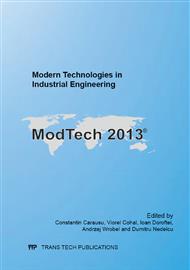p.699
p.705
p.711
p.718
p.727
p.733
p.739
p.745
p.751
Choosing the Optimum Method of Treating the Ballast Water Onboard Ships
Abstract:
The transport of aquatic organisms from one place to another by ships ballast water has created substantial environmental impact on discharging areas. In order to avoid that, the International Maritime Organization (IMO) recommends treating the ballast water by different methods. The paper presents four methods of managing ballast water, accepted by the Organization: treating by filtration and irradiation with ultraviolet light, treating by de-oxygenation, treating with biocide and treating by heating. The comparative analysis of the treating technologies allows the ship-owner to choose such equipment by analyzing the advantages and the disadvantages. Considering that not only the quality parameters are important but also the cost, the study is completed by a mathematical model for calculation of unit cost for treating ballast water onboard. The purpose of this study is to develop an instrument for selecting the optimum method of ballast water treatment suitable for each type of vessel or voyage, so the ship-owners would be able to choose a treatment method comparing the costs, based on the specific requirements.
Info:
Periodical:
Pages:
727-732
Citation:
Online since:
November 2013
Price:
Сopyright:
© 2014 Trans Tech Publications Ltd. All Rights Reserved
Share:
Citation:


